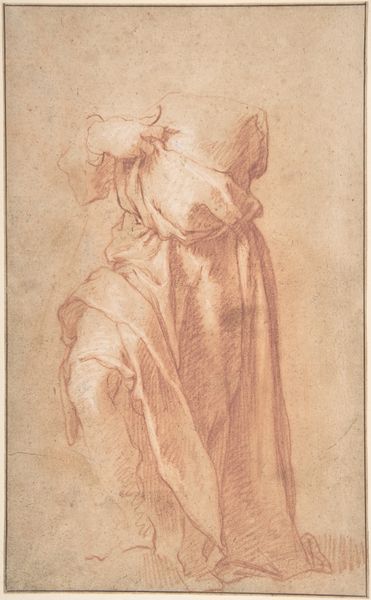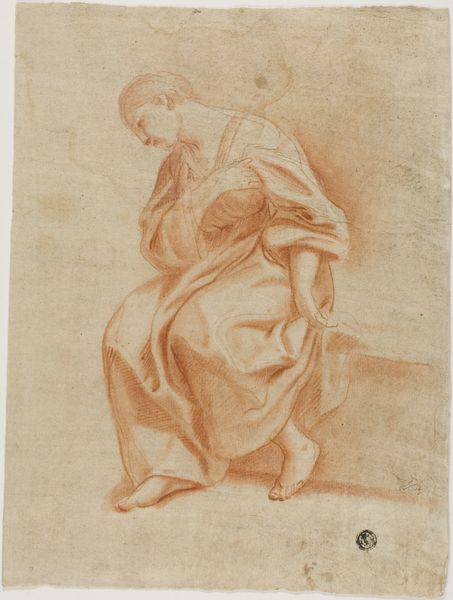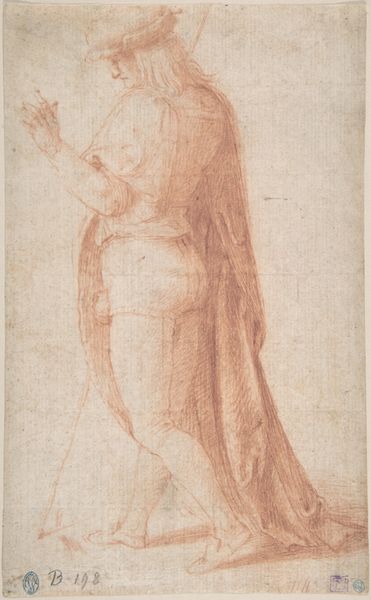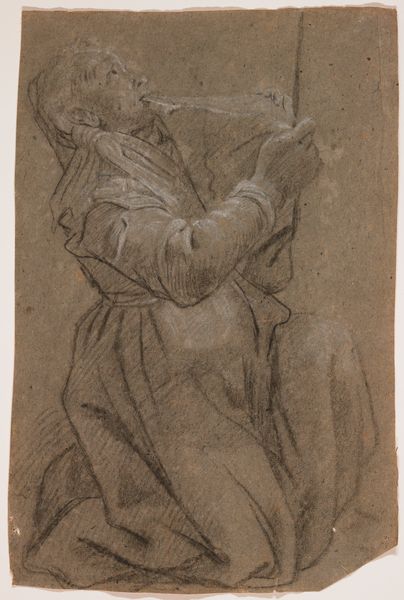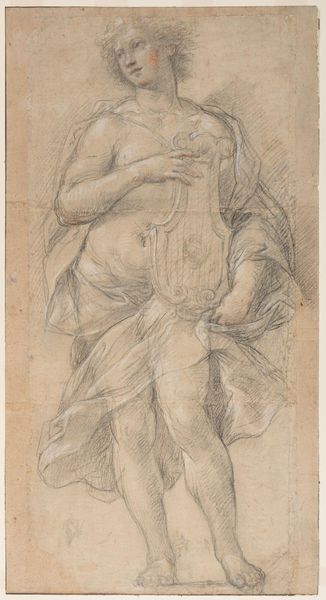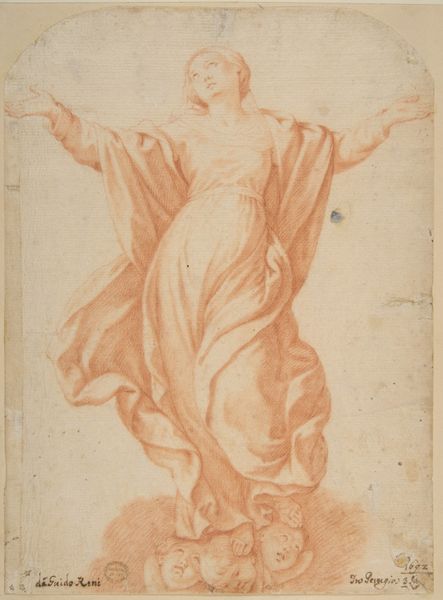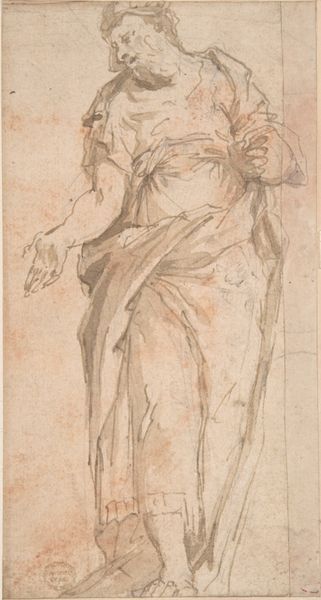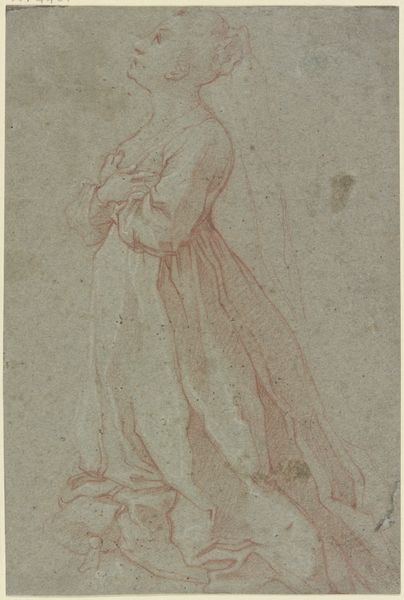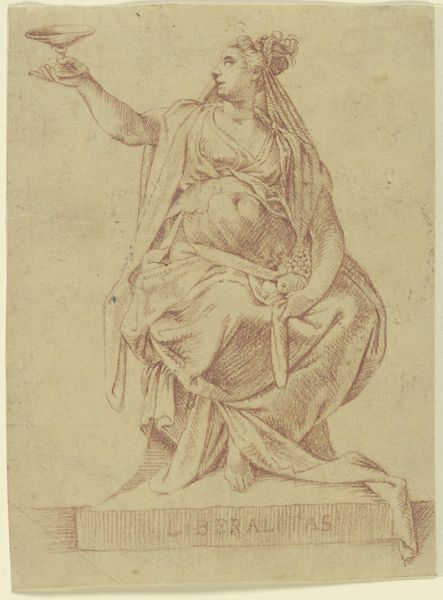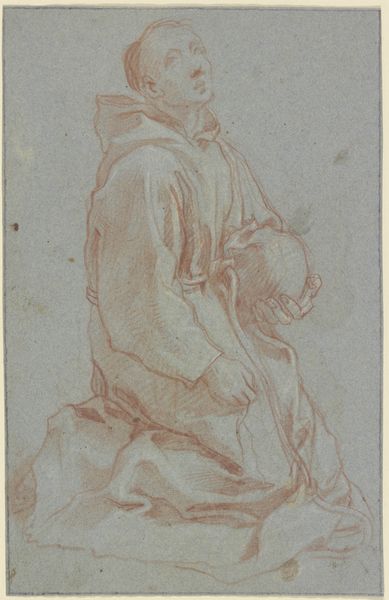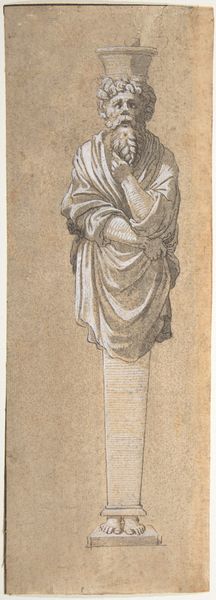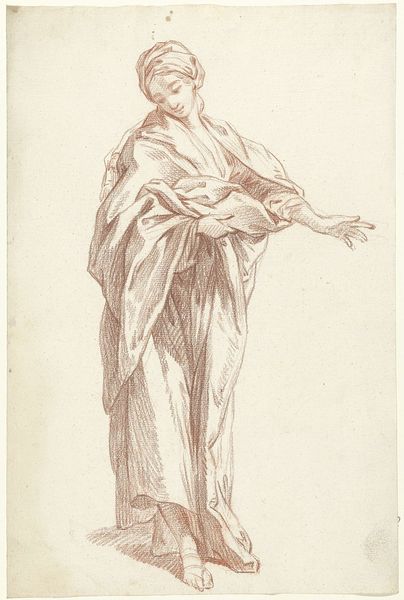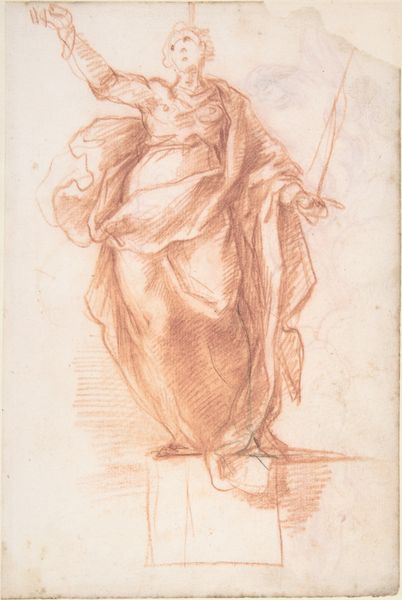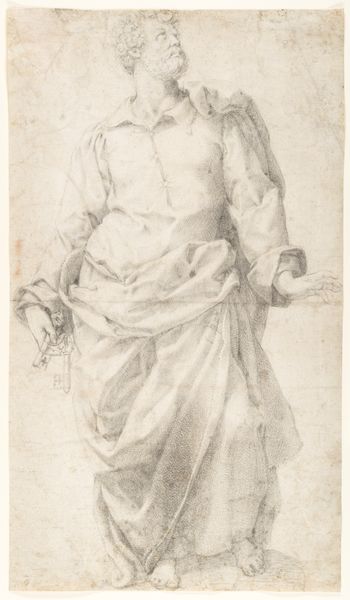![Prudence [verso] by Giovanni Alberti](/_next/image?url=https%3A%2F%2Fd2w8kbdekdi1gv.cloudfront.net%2FeyJidWNrZXQiOiAiYXJ0ZXJhLWltYWdlcy1idWNrZXQiLCAia2V5IjogImFydHdvcmtzL2Y4MjQ4NWY3LWRjZjQtNDVkZi04NzI0LWU2YTU5OTlhMzYyZS9mODI0ODVmNy1kY2Y0LTQ1ZGYtODcyNC1lNmE1OTk5YTM2MmVfZnVsbC5qcGciLCAiZWRpdHMiOiB7InJlc2l6ZSI6IHsid2lkdGgiOiAxOTIwLCAiaGVpZ2h0IjogMTkyMCwgImZpdCI6ICJpbnNpZGUifX19&w=3840&q=75)
drawing, dry-media
#
portrait
#
drawing
#
mannerism
#
figuration
#
dry-media
#
portrait drawing
Dimensions: overall: 28.7 x 17.7 cm (11 5/16 x 6 15/16 in.)
Copyright: National Gallery of Art: CC0 1.0
Curator: Looking at this, I immediately think of solitude and introspection. The red chalk gives a warmth, yet the figure seems very self-contained. Editor: You're right, there's a compelling stillness. We're looking at "Prudence [verso]," a drawing in red chalk by Giovanni Alberti, dating back to the late 16th or early 17th century. Curator: "Prudence," such a loaded term historically. Was Alberti presenting a virtue to aspire to, or perhaps critiquing societal expectations of women and the controlling rhetoric of idealised modesty? The way she almost shrinks in on herself, the robes voluminous but confining, is quite powerful. The visible vulnerability around her neckline complicates things. Editor: Contextually, this was created during a period when Mannerism was giving way to the Baroque, and representations of virtue and ideal womanhood were powerful cultural tools. These images were not only art, but potent statements embedded in broader power structures that dictated social norms. What were the prevailing views on feminine intellect and societal roles? How did Alberti’s status as a court artist inform the content, and more important, the reception of this work? Curator: Exactly. Thinking about Alberti as part of that system is essential. The figure, though rendered with delicate lines, is clearly idealized, likely a noblewoman or person of rank and means. How does the reality of that lived experience square with this notion of “prudence” which often translated to repression? Who truly benefits when women are "prudent" above all else? Editor: It raises interesting questions about audience reception as well. Who saw these drawings? What spaces were they displayed in? Did the viewers at the time recognize or question any of the implications you brought up? Perhaps “prudence” in this portrait also reflects anxieties related to societal shifts and anxieties related to gender roles. Curator: Absolutely. It highlights the ongoing conversation art engages us in, the continuing relevance of even centuries-old images. These are debates about selfhood and external expectations that resonate even now. Editor: Indeed, Alberti's red chalk gives the form, but time gives it meaning.
Comments
No comments
Be the first to comment and join the conversation on the ultimate creative platform.
